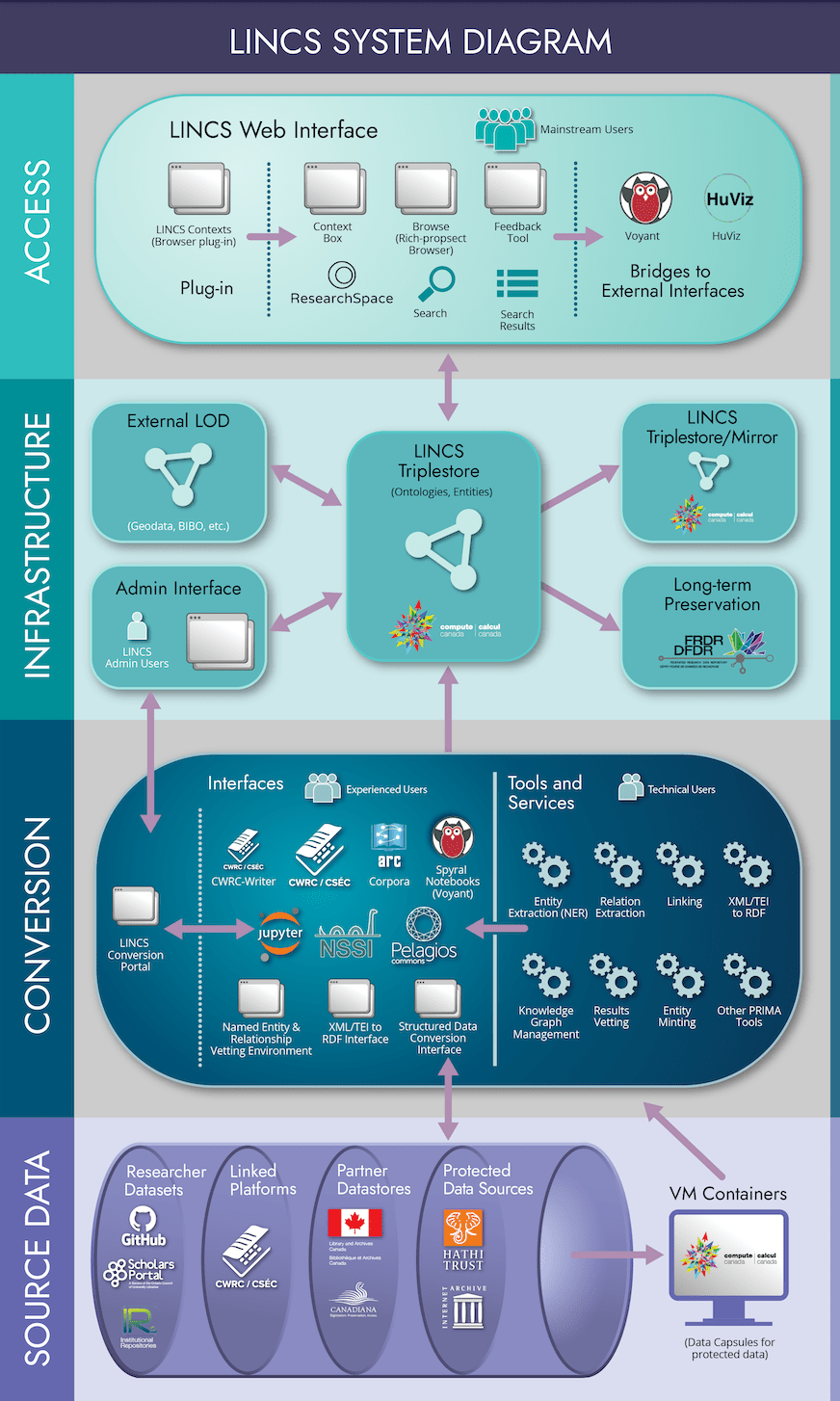Development
LINCS System Diagram
The LINCS Conversion portal will provide links to and documentation of various tools and interfaces for creating and converting Linked Open Data, ranging from accessible ones such as the Canadian Writing Research Collaboratory (CWRC) through to ones requiring greater technical knowledge, including Spyral or Jupyter programming notebook environments. LINCS will document user workflows and provide technical documentation for the tools and related code used on the project, and for the tools it adopts or adapts.

